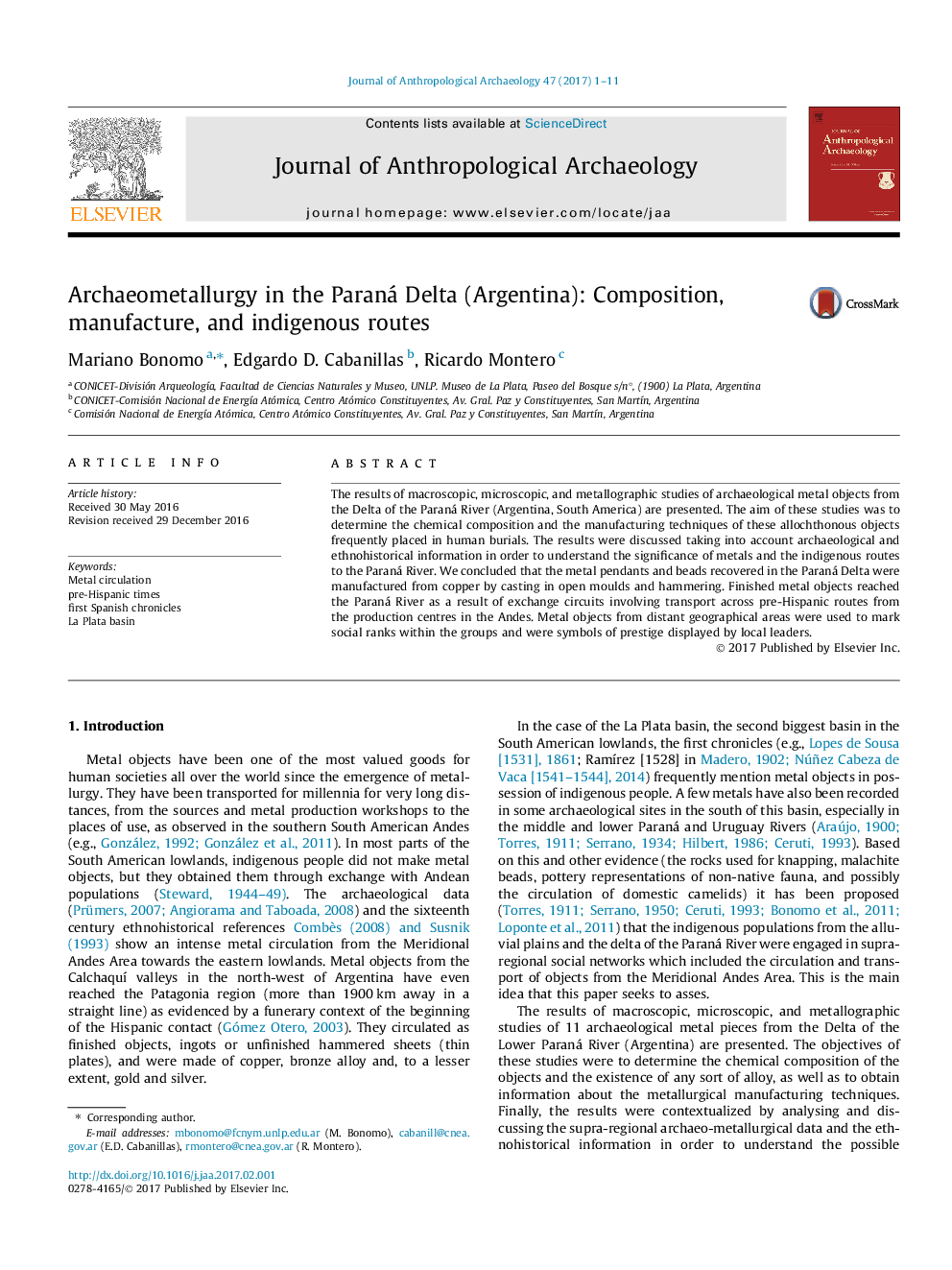| Article ID | Journal | Published Year | Pages | File Type |
|---|---|---|---|---|
| 5111955 | Journal of Anthropological Archaeology | 2017 | 11 Pages |
Abstract
The results of macroscopic, microscopic, and metallographic studies of archaeological metal objects from the Delta of the Paraná River (Argentina, South America) are presented. The aim of these studies was to determine the chemical composition and the manufacturing techniques of these allochthonous objects frequently placed in human burials. The results were discussed taking into account archaeological and ethnohistorical information in order to understand the significance of metals and the indigenous routes to the Paraná River. We concluded that the metal pendants and beads recovered in the Paraná Delta were manufactured from copper by casting in open moulds and hammering. Finished metal objects reached the Paraná River as a result of exchange circuits involving transport across pre-Hispanic routes from the production centres in the Andes. Metal objects from distant geographical areas were used to mark social ranks within the groups and were symbols of prestige displayed by local leaders.
Keywords
Related Topics
Social Sciences and Humanities
Arts and Humanities
History
Authors
Mariano Bonomo, Edgardo D. Cabanillas, Ricardo Montero,
